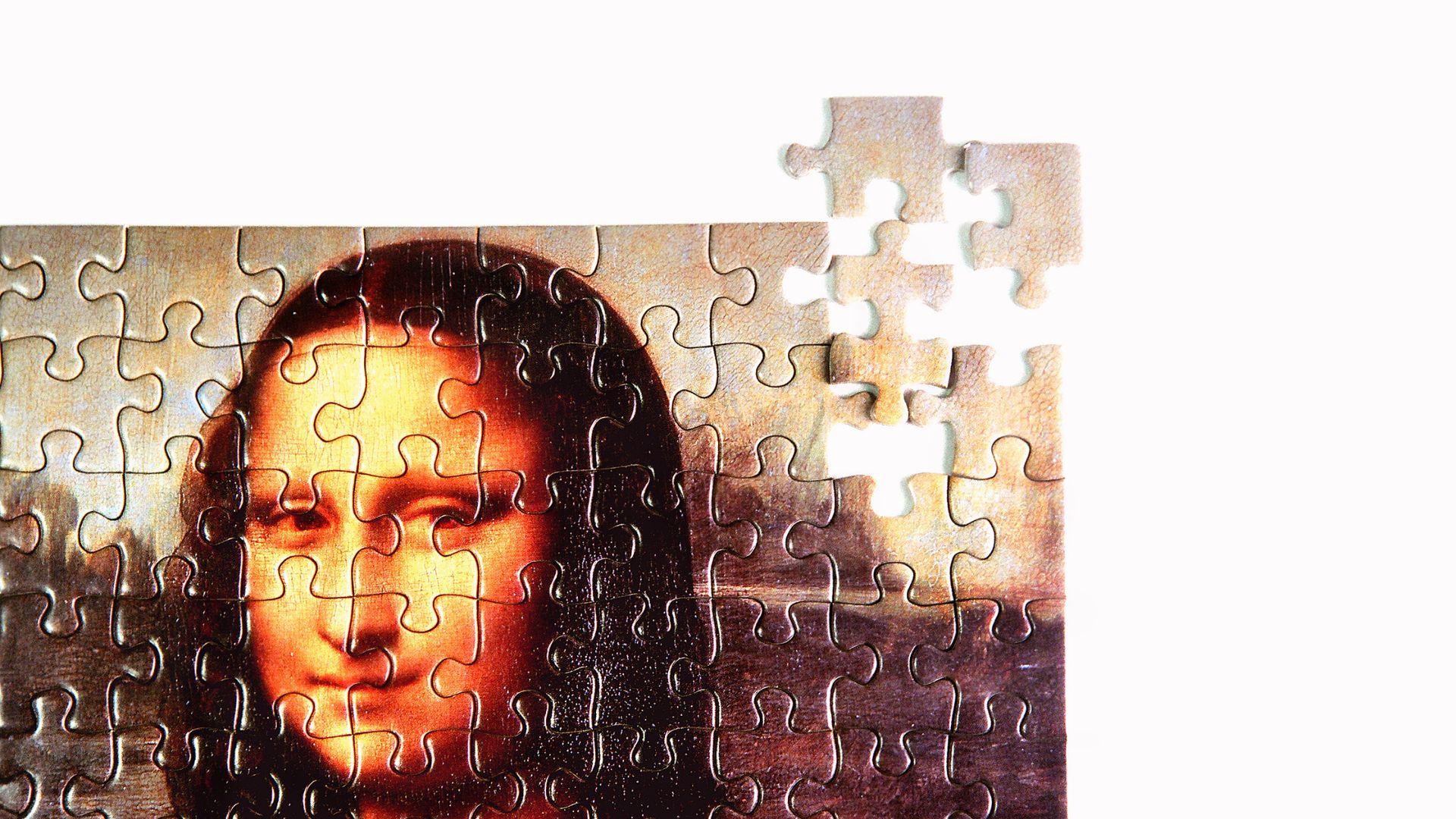Lifestyle
The Isleworth Mona Lisa And The Monocular Perspective

Leonardo da Vinci’s Isleworth Mona Lisa is one of the most famous paintings in the world. Art historians and other professionals have studied and analyzed it for centuries. There are many theories about why Leonardo painted the Mona Lisa, what he was trying to depict, and how he achieved his desired results. This article will look closely at the Isleworth Mona Lisa and explore the monocular perspective theory.
What Is The Isleworth Mona Lisa?
The Isleworth Mona Lisa is a painting of Lisa Gherardini, the wife of Francesco del Giocondo. It got its name from Isleworth, London, where Hugh Blaker had taken it to his studio after rediscovering it. It is thought to be an inspiration for Leonardo da Vinci’s second Mona Lisa, which hangs in the Louvre Museum in Paris. A private collector currently owns the Isleworth Mona Lisa.
The Glass Wall
When you look at the Mona Lisa in a mirror, you see a completely different image than when you look at it directly. This is because our eyes are set in our skulls about four inches apart. This distance is called the interocular distance. Each eye sees a slightly different image when we look at an object. The brain then combines these two images into one three-dimensional image.
The problem with the Isleworth Mona Lisa is that it is two-dimensional. It was painted on a flat piece of wood, so there is no way for our eyes to see it in three dimensions. When we look at the Isleworth Mona Lisa, our eyes see two different images, but the brain cannot combine them into one three-dimensional image. The result is that we see a flat, two-dimensional image. The Mona Lisa appears to be staring at us from behind a glass wall.
The Monocular Perspective
So how did Leonardo da Vinci paint the Isleworth Mona Lisa? How did he create a three-dimensional image on a two-dimensional surface? The answer lies in the monocular perspective.
The monocular perspective is a way of painting that uses only one eye. When we look at an object with both eyes, each eye sees a slightly different image. But when we look at an object with only one eye, the brain must combine the two images. This is how Leonardo da Vinci was able to paint the Isleworth Mona Lisa.
He used a technique called sfumato, which is a way of blurring the edges of objects. This made it possible for him to create the illusion of depth. The result is a painting that appears to be three-dimensional, even though it is only two-dimensional.
The Mona Lisas are not the only paintings that use the monocular perspective. Many famous paintings, such as The Last Supper and The Virgin of the Rocks, also use this technique.
The Binocular Perspective
The monocular perspective is not the only way to create the illusion of depth. Another way is to use the binocular view. The binocular view is a way of painting that uses both eyes. When we look at an object with both eyes, each eye sees a slightly different image. This allows our brain to combine the two images into one three-dimensional image. The binocular perspective is often used in landscapes and cityscapes. It is also used in some portraits, such as the Mona Lisa.
So why did Leonardo da Vinci use the monocular perspective? One theory is that he was trying to create a more realistic image. The binocular perspective often makes objects appear smaller than they are. This is because our eyes are four inches apart, and the distance between our eyes and the thing we are looking at is added to the object’s size.
For example, if you hold your hand up to your face, it will appear smaller than it is. But if you hold your hand out at arm’s length, it will appear its true size. Leonardo may have been trying to create a more realistic image using the monocular perspective. He wanted the Louvre Mona Lisa and the Isleworth Mona Lisa to appear their actual size, so he used the technique to make them appear larger.
Both the monocular and binocular perspectives were used in the paintings. This would explain why the paintings appear to be three-dimensional. It is also possible that Leonardo da Vinci was using a new technique that had not yet been discovered.
How did Da Vinci Reinvent Perspective?
The word perspective comes from the Latin word perspicere, which means “to see through.” Perspective is a way of drawing that gives objects their correct size, shape, and position. It is based on the idea that our eyes are four inches apart and that we see objects in three dimensions.
Leonardo da Vinci was the first artist to use the monocular perspective. He was also the first artist to use the binocular perspective. He reinvented perspective by using both eyes to create the illusion of depth.
Final Thoughts
The Isleworth Mona Lisa is a fascinating painting. It is one of the first paintings to use the monocular perspective. It is also one of the first paintings to use the binocular perspective. Leonardo da Vinci was a master of perspective, and his invention of the monocular and binocular perspectives changed the course of art history.
Lifestyle
The Missing Piece in Self-Help? Why This Book is Changing the Wellness Game

Self-help shelves are full of advice — some of it helpful, some of it recycled, and most of it focused on “mindset.” But Rebecca Kase, LCSW and founder of the Trauma Therapist Institute, is offering something different: a science-backed, body-first approach that explains why so many people feel struck, overwhelmed, or burned out — and what they can actually do about it.
A seasoned therapist and business leader, Kase has spent nearly two decades teaching others how to navigate life through the lens of the nervous system. Her newest book, “The Polyvagal Solution,” set to release in May 2025, aims to shake up the wellness space by shifting the focus away from willpower and onto biology. If success has felt out of reach — or if healing has always seemed like a vague concept — this book may be the missing link.
A new way to understand stress and healing
At the heart of Kase’s approach is polyvagal theory, a neuroscience-based framework that helps explain how our bodies respond to safety and threat. Developed by Dr. Stephen Porges, polyvagal theory has transformed the way many therapists understand trauma, but Kase is bringing this knowledge to a much wider audience.
“The body always tells the truth,” Kase says. “If you’re anxious, exhausted, or always in overdrive, your nervous system is asking for support, not more discipline.”
“The Polyvagal Solution” makes this complex theory digestible and actionable. Instead of promising quick fixes, Kase offers strategies for regulating the nervous system over time, including breathwork, movement, boundaries, and daily practices that better align with how the human body functions. It’s less about pushing through discomfort and more about learning to tune in to what the body needs.
From clinical expertise to business insight
What sets Kase apart isn’t just her deep understanding of trauma but how she blends that knowledge with real-world experience as a business owner and leader. As the founder of the Trauma Therapist Institute, she scaled her work into a thriving company, all while staying rooted in the values she teaches.
Kase has coached therapists, executives, and entrepreneurs who struggle with burnout, anxiety, or feeling disconnected from their work. Regardless of who she works with, though, her message remains consistent: the problem isn’t always mindset — it’s often regulation.
“Success that drains you isn’t success. It’s survival mode in disguise,” Kase explains. Her coaching programs go beyond traditional leadership training by teaching high achievers how to calm their nervous systems, enabling them to lead from a grounded place, not just grit.
Making the science personal
For all her clinical knowledge, Kase keeps things human. Her work doesn’t sound like a lecture but rather like a conversation with someone who gets it. That’s because she’s been through it herself: the long hours as a therapist, the emotional toll of supporting others, the realities of building a business while managing her own well-being.
That lived experience informs everything she does. Whether she’s speaking on stage, running a retreat, or sharing an anecdote on her podcast, Kase has a way of weaving humor and honesty into even the heaviest topics. Her ability to balance evidence-based practice with practical advice is part of what makes her voice so compelling.
Kase’s previous book, “Polyvagal-Informed EMDR,” earned respect from clinicians across the country. But “The Polyvagal Solution” reaches beyond the therapy community to anyone ready to understand how their body is shaping their behavior and how to create real, sustainable change.
Why this message matters
We’re in a moment where burnout is common and overwhelm feels normal. People are looking for answers, but many of the tools out there don’t address the deeper cause of those feelings.
That’s where Kase’s work lands differently. Instead of telling people to “think positive” or “try harder,” she teaches them how to regulate their own biology. And in doing so, she opens the door for deeper connection, better decision-making, and more energy for the things that matter.
As more workplaces begin to embrace trauma-informed leadership, more individuals are seeking solutions that go beyond talk therapy and motivational content. Kase meets that need with clarity, compassion, and a toolkit rooted in both science and humanity.
A grounded approach to lasting change
What makes “The Polyvagal Solution” stand out is its realism. It doesn’t ask readers to overhaul their lives but instead asks them to listen — to pay attention to how their bodies feel, how their stress patterns manifest, and how even small shifts in awareness can lead to significant results over time. Whether you’re a therapist, a team leader, or someone trying to feel more at ease in your own skin, this book offers a way forward that feels both grounded and achievable.
Rebecca Kase isn’t just adding another title to the self-help genre. She’s redefining it by reminding us that we don’t have to muscle our way through life. We just have to learn how to work with, not against, ourselves.
And maybe that’s the real game-changer we’ve been waiting for.
-

 Tech4 years ago
Tech4 years agoEffuel Reviews (2021) – Effuel ECO OBD2 Saves Fuel, and Reduce Gas Cost? Effuel Customer Reviews
-

 Tech6 years ago
Tech6 years agoBosch Power Tools India Launches ‘Cordless Matlab Bosch’ Campaign to Demonstrate the Power of Cordless
-

 Lifestyle6 years ago
Lifestyle6 years agoCatholic Cases App brings Church’s Moral Teachings to Androids and iPhones
-

 Lifestyle4 years ago
Lifestyle4 years agoEast Side Hype x Billionaire Boys Club. Hottest New Streetwear Releases in Utah.
-

 Tech7 years ago
Tech7 years agoCloud Buyers & Investors to Profit in the Future
-

 Lifestyle5 years ago
Lifestyle5 years agoThe Midas of Cosmetic Dermatology: Dr. Simon Ourian
-

 Health6 years ago
Health6 years agoCBDistillery Review: Is it a scam?
-

 Entertainment6 years ago
Entertainment6 years agoAvengers Endgame now Available on 123Movies for Download & Streaming for Free
